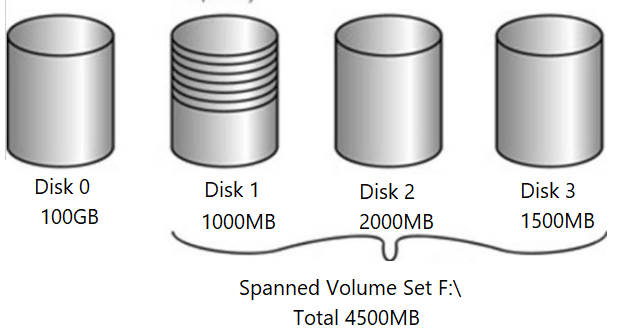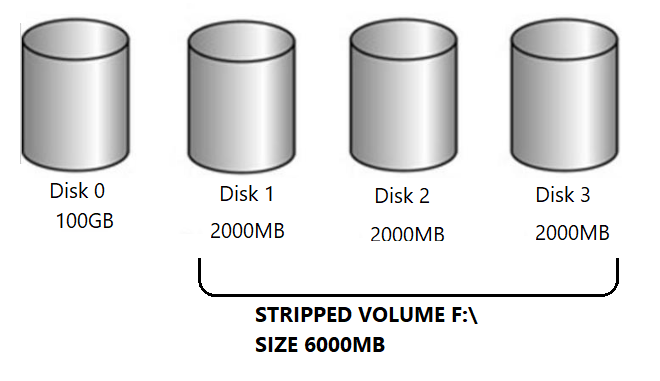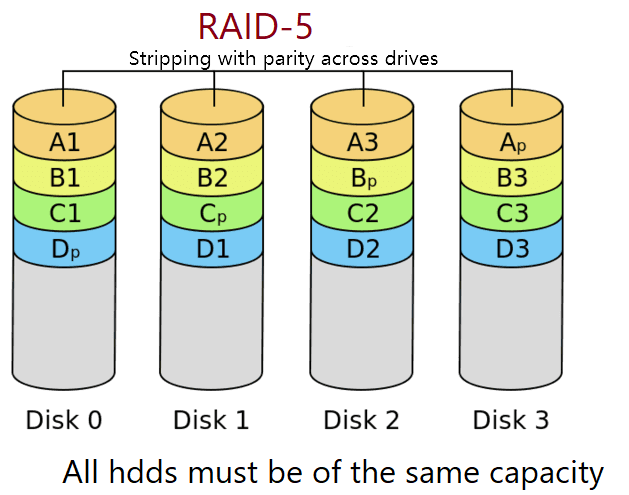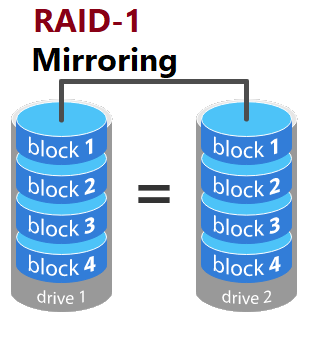Dynamic Disk - Volume Types
1. Spanned Volume

- Free unallocated space from multiple HDDs can be combined together as one volume.
- 2 to 32 hard disks can be combined.
- There is no data security, if any one hard disk fails you will lose the data.
- There is no performance gain, only combined storage.
2. Stripped Volume [ Also called as RAID-0]

- It is also known as RAID-0 (Redundant Array of Independent Disk).
- We can connect from 2 to 32 HDDs in one Striped volume theoretically.
- Used to combine a minimum of 2 to 32 same capacity & type HDDs in one volume.
- Data read and write will be done faster.
- It combines the capacity from multiple disks so storage will be higher.
- If any one HDD fails you will lose the data.
3. RAID-5 Volume [ RAID with Parity - RAID-5]

- Capacity equal to one HDD will be utilized to store parity information.
- Data is written on all the three HDDs with parity information stored on each HDD.
- If any one HDD fails then data can be regenerated from the remaining HDDs in the RAID.
- Capacity equal to one HDD will be used for the parity information.
For example : 1TB + 1TB + 1TB = 3TB total storage available, but we can use only 2TB for storing data.
4. Mirror Volume

- It is useful for the Server OS for fault tolerance and redundancy of OS and data.
- Mostly it is used for OS fault tolerance.
- It is a must to use same capacity HDDs and the same type like SATA or SSD.
- The same data is written on the first HDD and then on the second HDD.
- If any one HDD fails, your data will be safe on the other HDD. [Fault Tolerance]
In Windows 10 using Disk Management tool you can Extend , Shrink the volumes as per requirement and space available on the hdd.